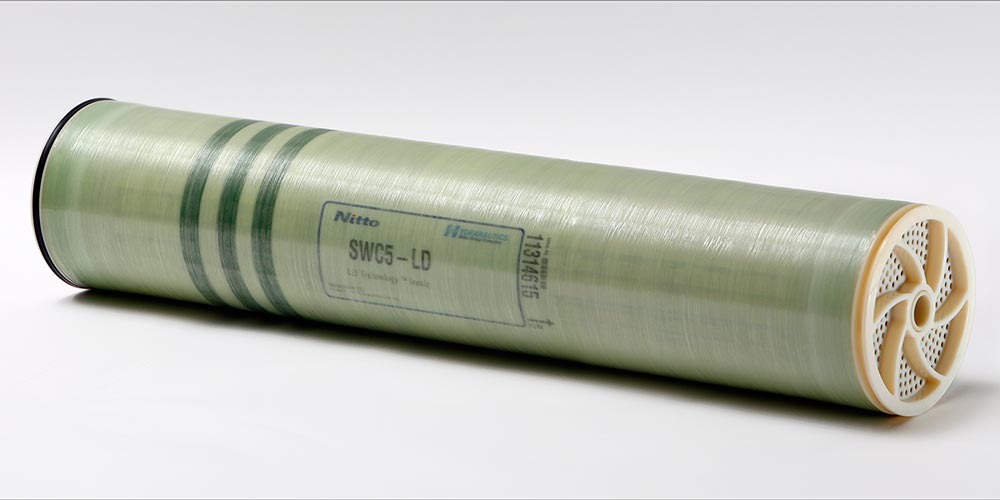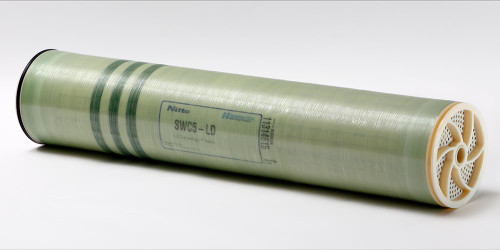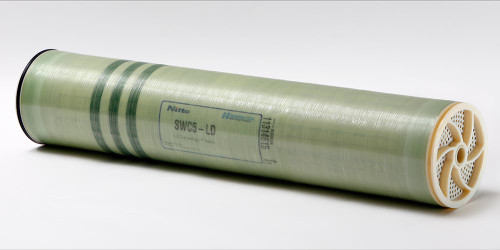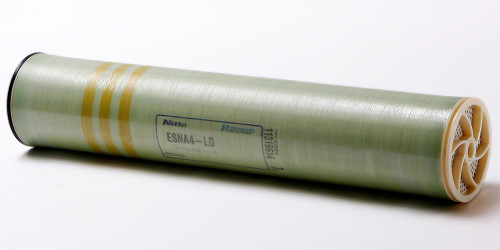SWC4B membranes use the same polymer chemistry as SWC4 offering highest rejection including boron. SWC4B-LD and SWC4B MAX membranes are used in the production of potable waters when the permeate boron concentration is critical.They do not need the second pass thus reducing capital costs.
SWC4B-LD membranes use patented Low Differential LD™ technology designed to minimize colloidal fouling. They use a patented 34 mil thickness feed spacer that prevents colloidal fouling and increases the effectiveness of membrane cleaning.
As a result, the SWC4-LD membrane does not need to be cleaned frequently – thus reducing treatment cost – while offering extreme durability and consistent performance.
[custom-specifications]
SWC4B-LD Specifications:
- Permeate Flow: 5,800 gpd (21.96 m3/d)
- Salt Rejection: 99.8 % (99.7 % minimum)
- Type Configuration: Spiral Wound
- Membrane Polymer: Composite Polyamide
- Membrane Active Area: 400 ft2 (37.1m2)
- Feed Spacer: 34 mil (0.864 mm)
The stated performance is initial (data taken after 30 minutes of operation), based on the following conditions:
- 32,000 ppm NaCl
- 800 psi (5.5 MPa) Applied Pressure
- 77 °F (25 °C) Operating Temperature
- 10% Permeate Recovery
- 6.5 - 7.0 pH Range
[/custom-specifications]
[custom-features]
Standard Operating Limits:
- Maximum Applied Pressure: 1200 psig (8.27 MPa)
- Maximum Chlorine Concentration: < 0.1 PPM
- Maximum Operating Temperature: 113 °F (45 °C)
- pH Range, Continuous (Cleaning): 2-11 (1-13)
- Maximum Feedwater Turbidity: 1.0 NTU
- Maximum Feedwater SDI (15 mins): 5.0
- Maximum Feed Flow: 75 GPM (17.0 m3/h)
- Minimum Ratio of Concentrate to
- Permeate Flow for any Element: 5:1
- Maximum Pressure Drop for Each Element: 15 psi
[/custom-features]
[custom-usage]
- Seawater Desalting
- Broad Offering of Membrane Formulations Designed to Accommodate Varying Levels of Seawater Salinities Worldwide
[/custom-usage]
-
Fast!
Very, very fast dispatch
 ENGLISH
ENGLISH ESPAÑOL
ESPAÑOL العربية
العربية PORTUGUÉS
PORTUGUÉS FRANÇAIS
FRANÇAIS







